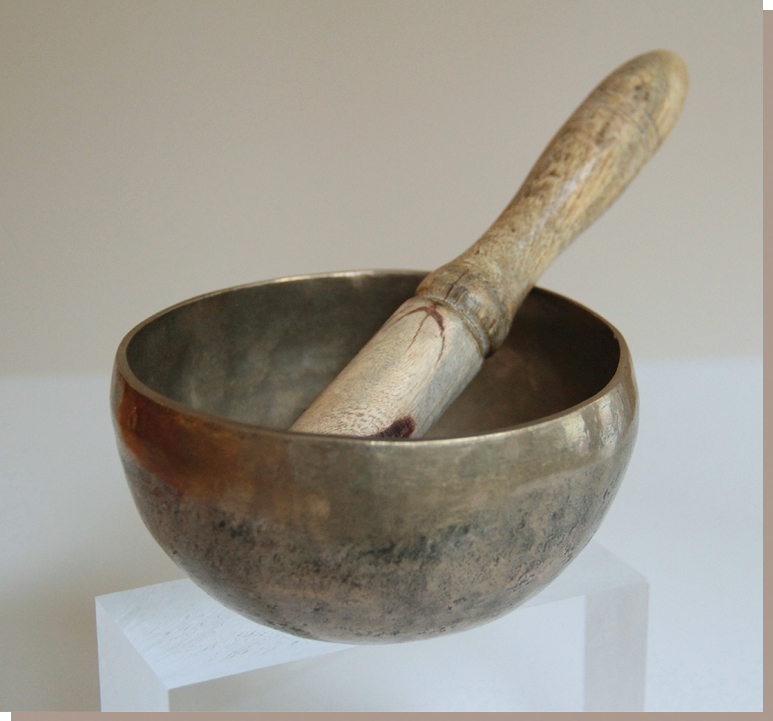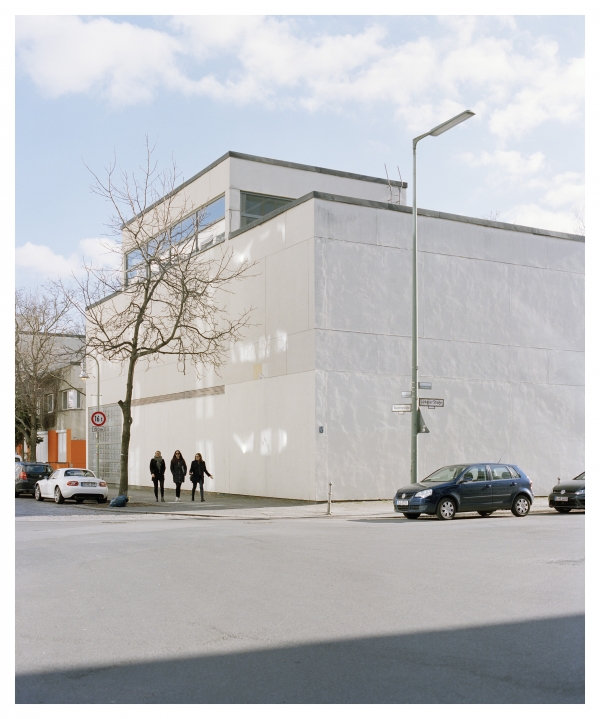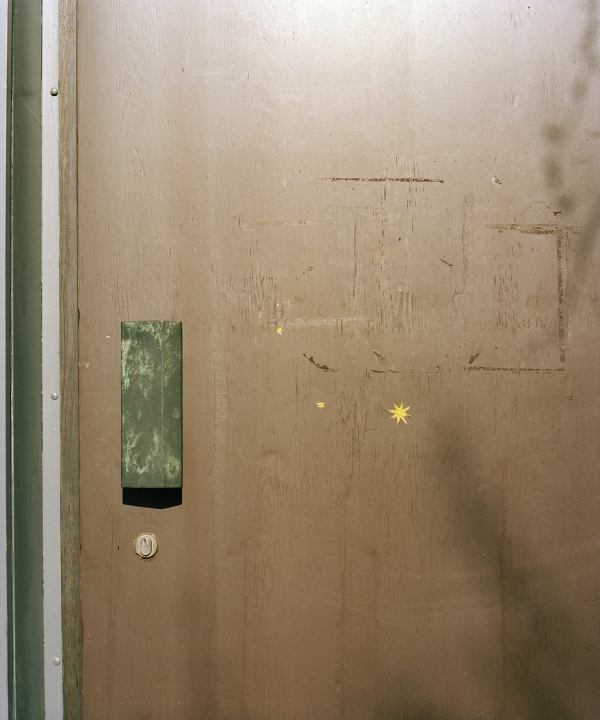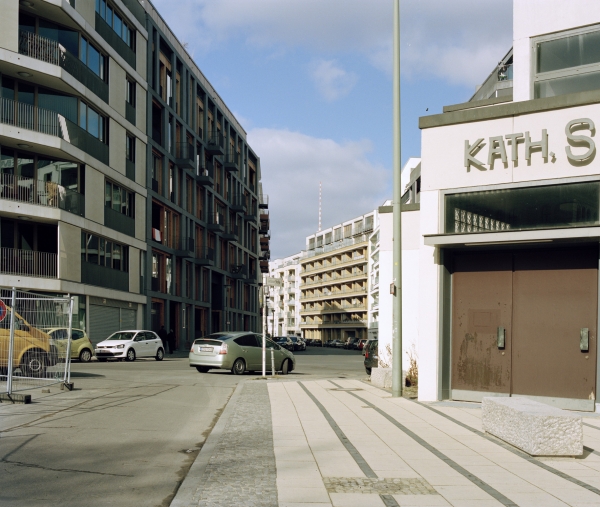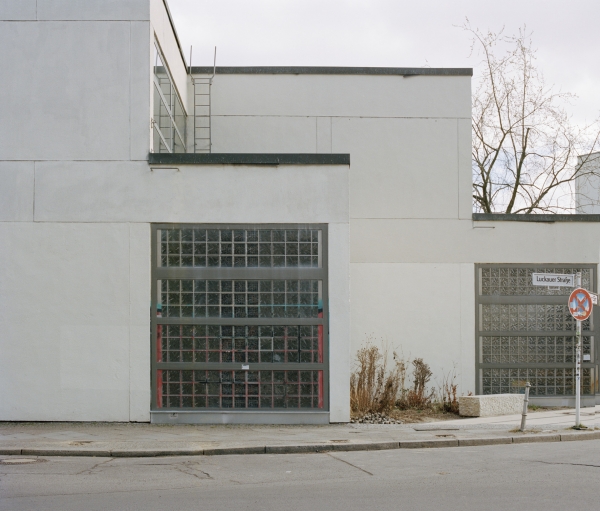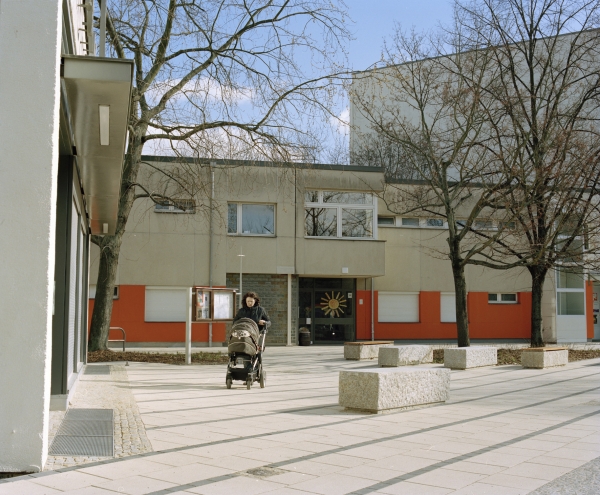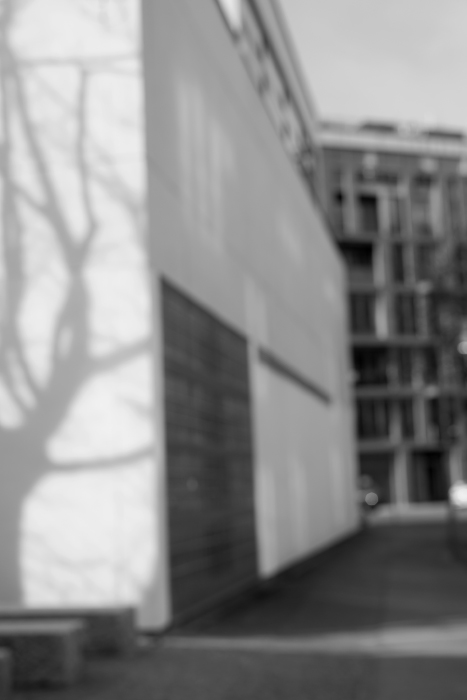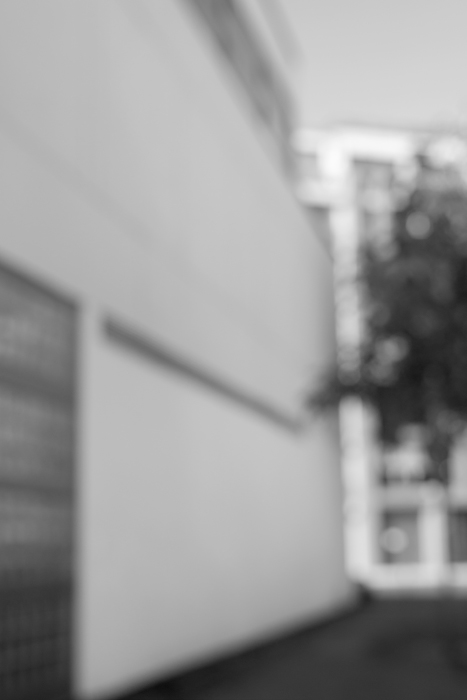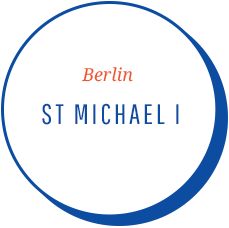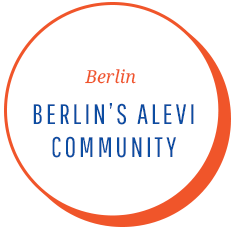BETWEEN VISIBILITY AND INVISIBILITY
The building, constructed in the 1960s and now home to part of St. Michael’s Catholic parish, appears small and inconspicuous. From the outside of this grey building, one can hardly tell there’s a church inside. When Berlin was divided, the church looked lost next to the wall. Today it stands right in the middle of an architectonic clash, surrounded by the gleaming façades of new residential and office buildings, on what used to be “no man’s land” during the time of the Berlin Wall. Walking through the area today, the invisible boundary between the inaccessible new buildings with their high security on one side, and the seemingly improvised Church on the other, are markedly obvious.
Contrary to its external impression, the inside of the church is bursting with life. Many people visit for various different reasons, not always religious ones.
Three Franciscan Sisters have made it their home, and dedicate their work to the fight against poverty. Several times a week they open the church premises for lunch. They help offenders or former drug-addicts through the process of rehabilitation. The daycare centre, which belongs to the church, is attended by children of different religions.
For a few hours every Sunday however, the small St. Michael’s Church strips itself of its bland exterior – namely when Berlin’s Ghanaian community celebrates the Eucharist. Accompanied by music and dance, the religious ritual takes several hours. In traditional festive clothes, the worshippers celebrate in front of the church, as well as inside. As it opens out into the surrounding urban space, the church suddenly becomes visible as a religious place. Just for a moment, its colourful splendor shines for all to see.
This brass singing bowl comes from North India. Singing bowls, which originally belonged to the Buddhist tradition, are now also used in Christian churches, where their sounds are used in meditation, or to initiate or complete rituals.
In the interfaith peace prayers that take place regularly in St. Michael's Church II, the sound of the bowl signals the start of the period of silent meditation. After about ten minutes, the singing bowl sounds a second time and a peace prayer is recited. Singing bowls are also a feature of the rituals during the six-week “spiritual exercises in daily life” which take place twice a year. These exercises are intended to allow the individual to reflect on his or her own faith.
The children who attend the nursery at St. Michael’s also take great delight in the singing bowls. The nursery teachers use them because of their calming effect on the children.
TIMELINE ST MICHAEL II
2008
Since 2008
St Michael’s is now the meeting place for the Catholic Youth Church “sam”, a project run by the Catholic youth of Berlin and the Archbishop’s office for pastoral youth care. The city’s youth fairs, offering a “cross-over of music and liturgy”, are attended by young people from all over Berlin, Brandenburg and Pomerania.
2000
Early 2000s
The Ghanaian community began holding services to celebrate the Eucharist (communion) on Sundays at 1pm at St. Michael’s Church II.
1990
Late 1990s
The Ghanaian community in Berlin held their services in rooms belonging to the “Africa Centre Berlin”, established in 1996 in Hohenstaufenbergstraße in Schöneberg.
1989
1989
Fall of the Berlin Wall. Due to the differences in identity which had arisen during the separation of the two parishes, they did not reunite. Instead, St. Michael II, formerly West Berlin, merged with the St. Marien Liebfrauen (St. Mary Our Lady) parish. St. Michael I, formerly in East Berlin, went on to form a parish together with St. Hedwig.
1965
1965 – 1989
St. Michael II’s parish was involved in charity work for the homeless, for addicts and for ex-offenders. They provided lunchtime meals for the needy. They also introduced a children’s daycare centre for the local community.
1964
1964
After the Berlin Wall had divided St. Michael's parish, a new St. Michael's Church was built on Waldemarstraße on the western side of the wall according to the plans of architect Hans Schaefer. The church was initially proposed as a temporary solution with a view to a future reunification with the original Church (then on the eastern side).

